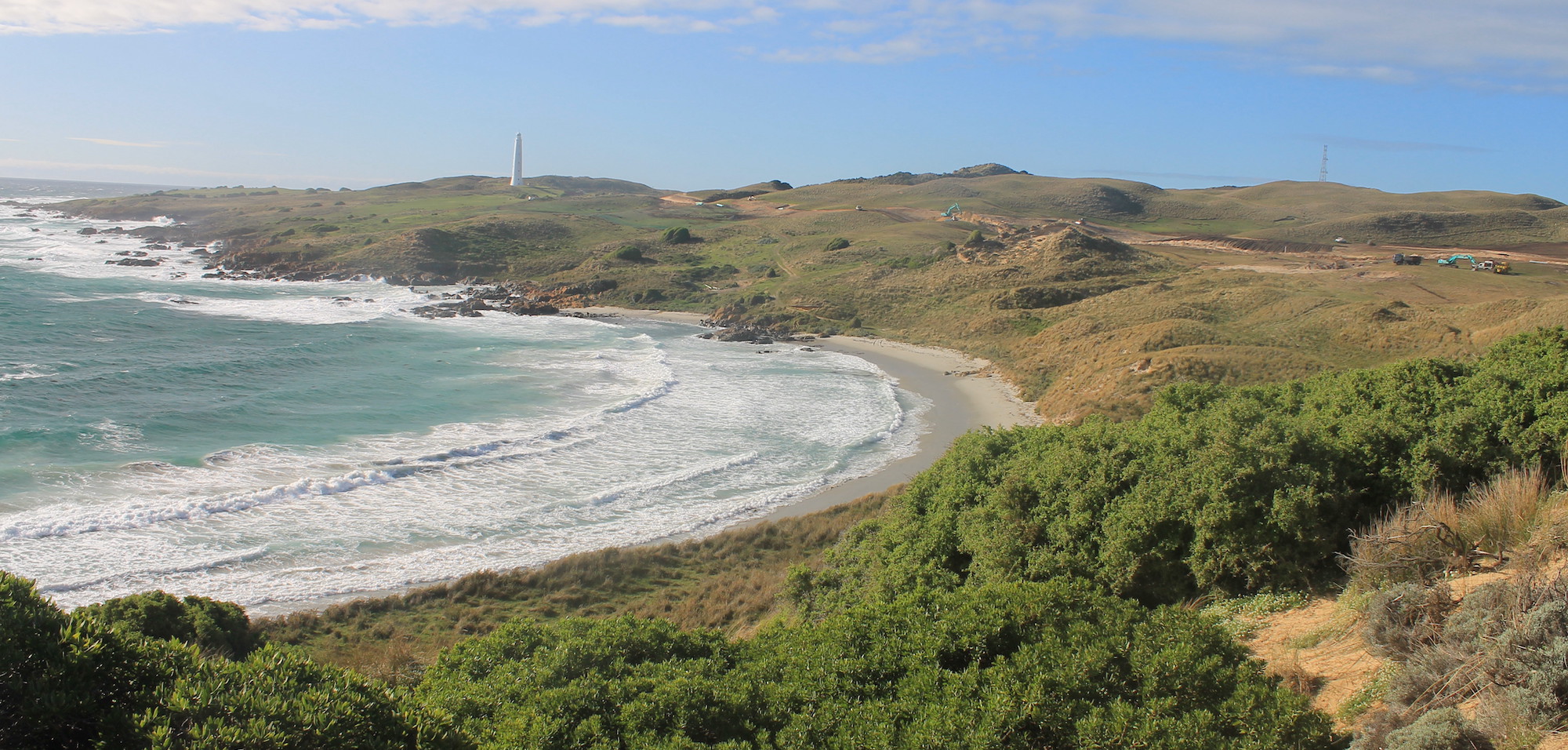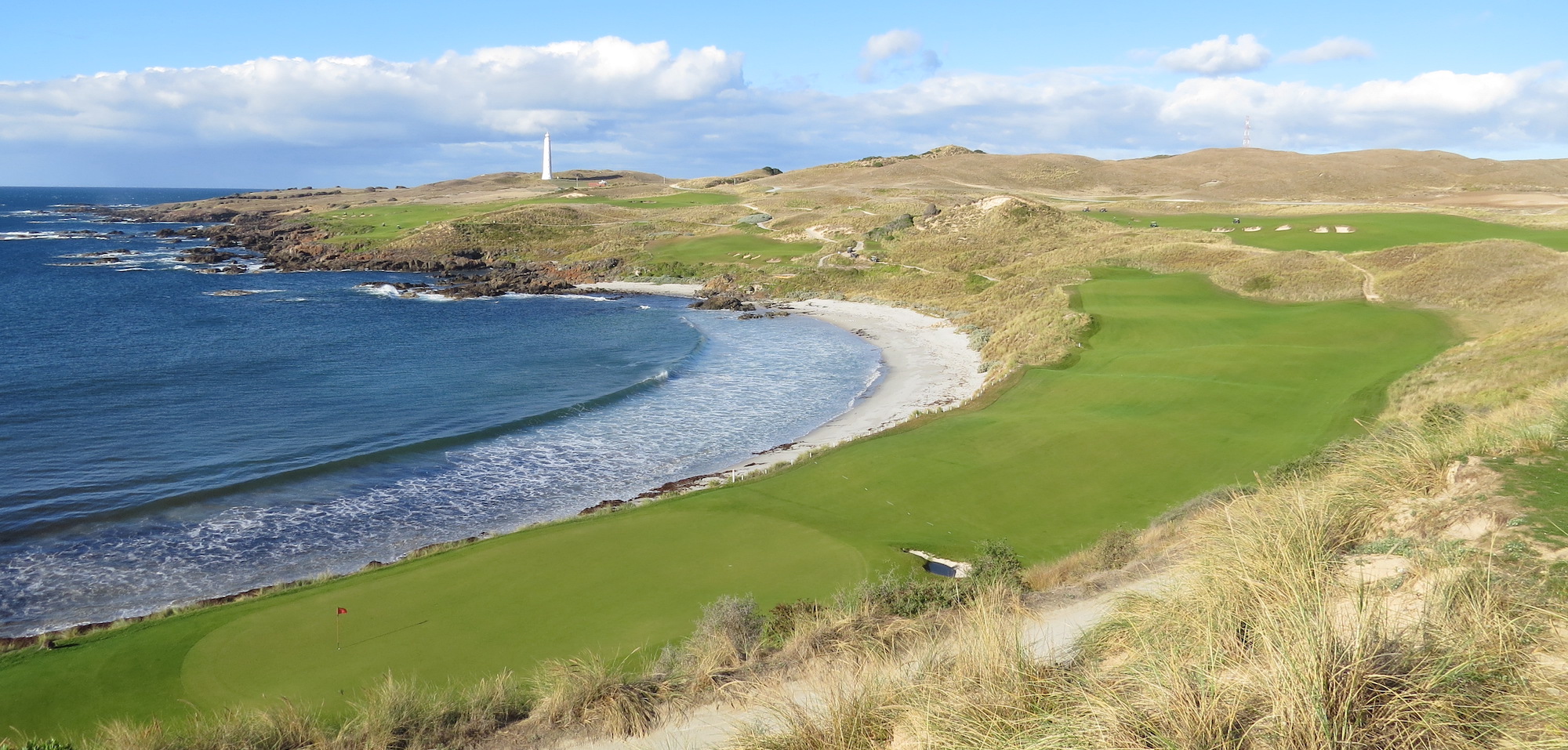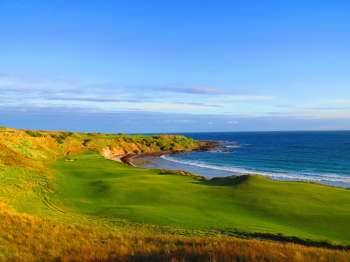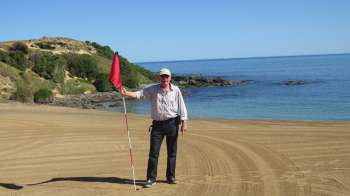Cape Wickham Links – The Inside Design Story
Ten years ago I made a phone call that changed my life. Despite both living and working on the Mornington Peninsula, Andrew Purchase and I had never met. I’m generally not the pushiest guy, but after returning from my first visit to King Island I was so overawed by a property Andrew had purchased at Cape Wickham, that I decided to cold-call – and beg him not to build a golf course on it.
Our first conversation lasted well over an hour, and what struck me was Andrew’s desire, in his own words, ‘to stop building crap’ and to create something meaningful on King Island. I knew that it could be done, but not with the plan, and not with the land, that he was using.
To backtrack, Andrew bought the private land parcel at Cape Wickham in 2010 and managed to secure approvals for a golf course on it in quick time from the local council. He had been in the golf construction business for many years and built golf courses all over the world, and that first layout certainly ticked a number of boxes. It did showcase the scenery well and had a few spectacular downhill holes. Plus it was confined to the freehold land, which removed many of the planning issues we would subsequently face.
My case to Andrew from day one, was that a good course on King Island was not going to work, especially when it looked down upon a 10 out of 10 golf site. We both agreed that we needed a world-class course on the island, and to do that we needed to be more ambitious. We needed to talk to the Tasmanian Government, and we needed access to the crown reserve land right along the coast.
The rest, as they say, is history – except that in the case of Cape Wickham, history has been somewhat twisted and misrepresented. After ten years, and with the course clearly established as Australia’s best modern design, I feel it’s important to provide the industry with some background.
The first thing Andrew and I did back in 2011 was to pause the local council approval process and take a fresh look at the whole Cape Wickham area. I remember Richard Chamberlain and I finding the 1st hole within about half an hour on our first day back to Cape Wickham. It was like a lightbulb moment, because you could see an amazing finishing hole down on the beach, and we now had an incredible opening hole on the headland above it. The problem was we didn’t own all that land, and we would need to rethink the entire routing.
It was clear early on that we would not only need the crown land to make Cape Wickham successful, we would also need additional dunes to the south. Andrew had built many courses over the years, but never developed one himself so enter Duncan Andrews, who fell in love with the site and took over as developer once we had secured approvals. Andrew’s company, Programmed Turnpoint, was engaged as the construction contractor. That’s when the fun began!
After seeing his work at Kingsley Club in Michigan, it was my recommendation that Mike DeVries should be considered for design and Duncan who ultimately engaged him as course architect. Duncan, Mike and I then produced the final routing. Mike has a tireless work ethic and is enthusiastic about the business of building golf. Unfortunately Cape Wickham was a complex build, and Mike struggled with the nuances of true links golf and the concept of a collaborative approach. The three months he spent working on the course were very difficult.
There were certainly extenuating circumstances, including the fact that we were forced to remove around 20 hectares of vegetation and expose huge areas of sand, prior to mutton birds returning from the northern hemisphere. It was winter, windy, messy and, unfortunately, the construction plans really only existed in Mike’s own mind.
With the project hurtling toward a budgetary cliff, Duncan Andrews became extremely concerned about the holes on the ground and the direction the project was heading. In early October 2013 he made the call, that Mike needed to return to America and that we would continue without him. Andrew was asked to deliver the news, which I know he found gut wrenching. We were all concerned at that point, as to what would become of the golf course. Only three holes (1–3) were finished, whilst a few more (4, 5, 6 and 17) had started but were not working out in any convincing manner.
Duncan Andrews is a shrewd operator. He knows golf and he knows the business of golf, but what he did next was take a huge risk. Although I had been on site almost every week during those first three months, and played a key role in the establishment of the course routing, along with Mike and Duncan, I wasn’t an architect. The first thing I did when Duncan offered me the design job, was to try to talk him out of it. The second thing I did was call Bill Coore. Bill Coore was as gracious as one could hope for, and made himself available to me several times during construction. He wasn’t able to help specifically with design, but he did provide many wise words and – most importantly – convinced me that I was the perfect person to carry on the project.
When it comes to golf course construction, experience is obviously ideal, but knowledge goes a long, long way. So does passion and direct personal oversight. Although I had never built a course before, Duncan believed that I would be able to see great holes on those amazing landforms. The first changes I made, were to the greens and surrounds on 4, 5 and 17, to adjust the 5th fairway and change the last third of the 6th hole. I also added the fairway bunker on the 2nd and rebuilt the greenside bunkers on the 1st. My aim in those early days was to make the holes more authentically linksy than they were, and more manageable by shifting away from bigger ‘mitten-shaped’ bunkers to the smaller, rugged traps you mostly now see at Wickham.
One of the elements I agonised over the most, was when to get bold with my greens, like the 6th, 10th, 12th and 17th, and when to keep things quiet, like the 5th, 13th and 15th. In some ways, the quietest greens are the hardest. One of my main criticisms of modern golf, is the ‘look-at-me’ nature of golf course architecture, and how often you see overly bold design or so-called ‘cool’ shaping features. It seems to me, that on many projects designers are more interested in attracting attention, and future work, than getting the best result for their client.
Two of my favourite holes in the world have really ‘quiet’ greens. Royal Adelaide 3 and North Berwick 13, are both famous for prominent features; the large sand ridge down the right side at Royal Adelaide, for example, and the old stone wall along the left at North Berwick. What I love about these holes is not just how perfectly they fit their natural environs, but how understated, or ‘quiet’, they really are. The greens are narrow but have little internal contour. You rarely see such simple targets on modern courses.
When building the 18th at Cape Wickham I had a designer suggest that it needed more bunkers and more drama, and that you can’t make every hole a clear-cut risk vs reward. I agreed that not every single par four could favour a drive down one side of the fairway over the other, but surely one that ran alongside beachside cliffs toward a green pressed hard against that same cliff edge could. It would be like the 1st at Machrihanish, except with the green also set against the beach. How could a hole like that not be amazing?
Aside from the beauty and strategy of the 18th hole at Cape Wickham, I love that the shapes on the fairway look like they haven’t even been touched. The truth is, there was a series of large mounds through that hole that lead shaper Lindsay Richter and I softened into shoulders and subtle ridges running off the dunes. I’ve written previously about Lindsay, and how he deserves enormous credit for getting inside my head and being able to quickly understand how I wanted the holes to look and play. It was due to his skill, and the efforts of the Programmed Turnpoint construction team, that things were able to run quite smoothly after Mike left, despite my inexperience.

Above – Cape Wickham 18 Fairway before construction. Note the symmetrical mounds adjacent the beach.

Above – Cape Wickham 18 Fairway post construction
It’s important to note here, that we maintained a connection with Mike DeVries during those final ten months of construction and there were a couple of greens that I built to sketches Mike had drawn. Once tempers had cooled down, and the dust had settled on his departure, Mike DeVries was able to return to King Island for a week in mid-2014 and actually get back on a machine to shape part of the 16th hole. I think he was impressed with the work we had done, but perhaps still hurt that he hadn’t been able to see the project through to completion. I believe he owes Duncan Andrews a huge debt of gratitude, for protecting his reputation and keeping his name associated with such an incredible golf course.
Despite things not working out with Mike on King Island, we all felt that the course needed an American name for the overseas raters to take seriously. And so it was in 2016 when Golf Digest Magazine, the most influential in the industry, ranked the course #24 in the World. I’m not sure the American raters would have been so quick to rush to a tiny island down under had they known who actually designed it. I don’t think foreign judges will have a problem visiting my next course on Kangaroo Island, which is scheduled to begin construction early next year. Like Wickham, Programmed Turnpoint is building The Cliffs, Kangaroo Island and many of the same key construction people are involved.
Cape Wickham was a career highlight for all of us involved in its creation, and with the ten-year anniversary of its origins upon us it really does warrant a little more of the background being told. I describe my first phone call with Andrew Purchase as having changed my life, not just because it gave me my start in design, but more broadly it enabled me to be part of an incredibly special, and internationally significant, Aussie made golf course. Make no mistake, Cape Wickham is in discussions with Sand Hills as the premier modern course in the world, and ranks alongside Pebble Beach, Old Head, Ardfin and perhaps Lofoten as the most spectacular properties anywhere in our game. Pebble Beach is obviously world renowned, but Cape Wickham more than holds its own when directly compared.
There are some great old golf courses in this country, but I don’t think we’ve had an Australian made project – designed, built and developed primarily by locals – with as many world-class holes on it as Cape Wickham, certainly not since the East Course at Royal Melbourne. Prominent golf writer Mike Clayton recently described Cape Wickham as, “the best of Australia’s new courses”, which was obviously gratifying for all of us involved in its creation.
From day one, I’ve always said that Cape Wickham and King Island were both bigger, and more important, than I was. None of us ever wanted any controversy to distract from our amazing golf course and as long as people visit King Island and loved the course we were all happy. Golfers don’t necessarily need to know the full backstory, but with the course now established and entrenched at the top of our local rankings, it would be nice for readers to understand my role. And golf magazines as well.
I never wanted to write this story, but a number of Australian and American publications have recently decided to credit Cape Wickham as a solo Mike DeVries design. As have DeVries’s own business partners. His corporate website also listed the course for two years as being his solo creation. Mike DeVries played a role no doubt in the success of Cape Wickham, but I spent 250 days on King Island while building that golf course and it really should be noted – somewhere – that I designed most of its holes.
Darius Oliver
Back to News
More News
Who Really Designed Cape Wickham Links?
AGD ranks Cape Wickham #1 in Australia & interviews Duncan Andrews to get full story on course design
Landmark professional golf tournament coming to Auckland
Pro golf will make a major return to NZ's largest city next March with event hosted by Royal Auckland & Grange
Grace Kim confirmed for 2026 women's Australian Open
Australian star will headline the Women’s Open when it returns to Kooyonga Golf Course in March
AGF releases 2024/25 Impact Report, highlighting life-changing opportunities for young Australians
The Australian Golf Foundation Report reveals a year of progress in making golf more accessible, inclusive, and life-changing for young people




